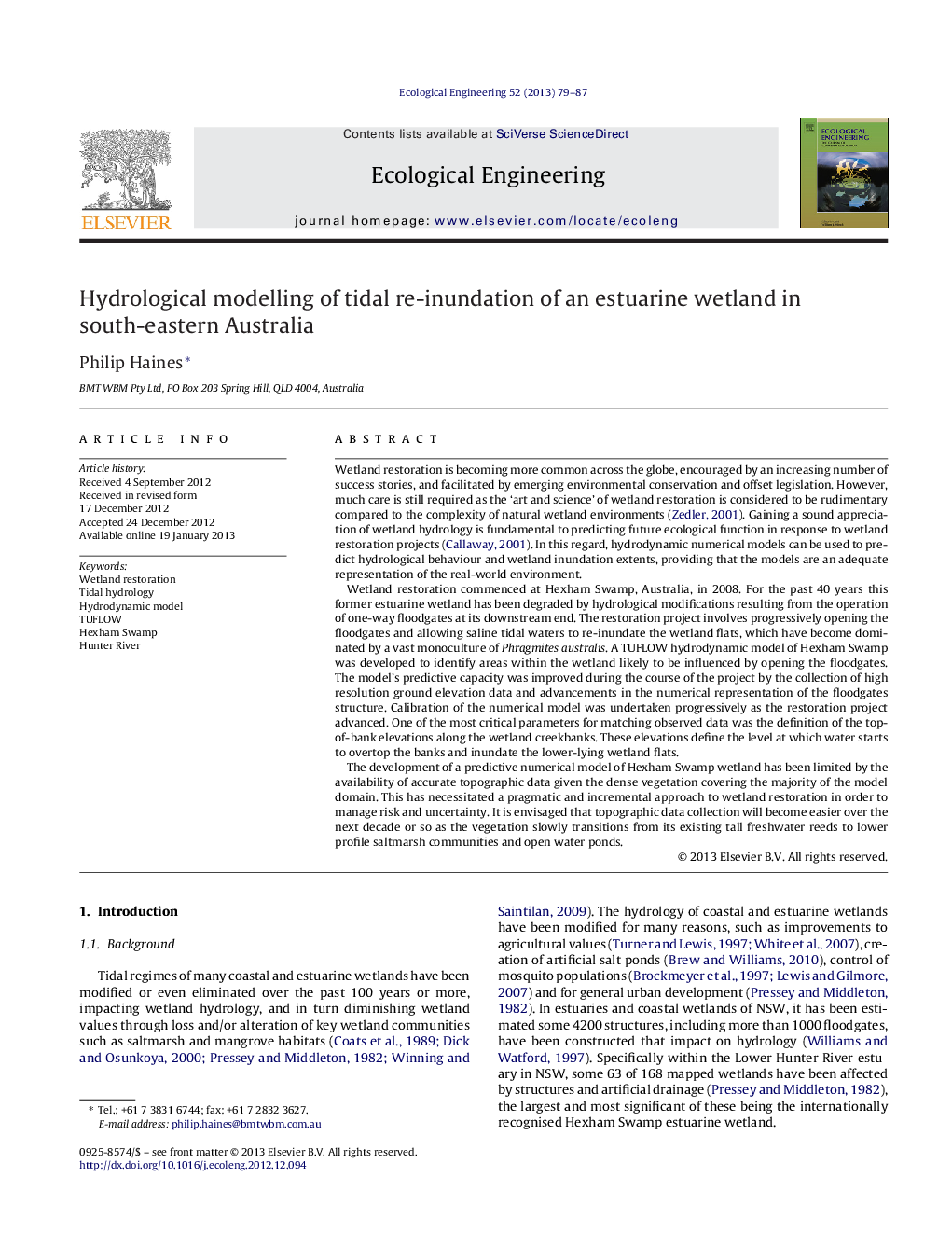| Article ID | Journal | Published Year | Pages | File Type |
|---|---|---|---|---|
| 4389739 | Ecological Engineering | 2013 | 9 Pages |
Wetland restoration is becoming more common across the globe, encouraged by an increasing number of success stories, and facilitated by emerging environmental conservation and offset legislation. However, much care is still required as the ‘art and science’ of wetland restoration is considered to be rudimentary compared to the complexity of natural wetland environments (Zedler, 2001). Gaining a sound appreciation of wetland hydrology is fundamental to predicting future ecological function in response to wetland restoration projects (Callaway, 2001). In this regard, hydrodynamic numerical models can be used to predict hydrological behaviour and wetland inundation extents, providing that the models are an adequate representation of the real-world environment.Wetland restoration commenced at Hexham Swamp, Australia, in 2008. For the past 40 years this former estuarine wetland has been degraded by hydrological modifications resulting from the operation of one-way floodgates at its downstream end. The restoration project involves progressively opening the floodgates and allowing saline tidal waters to re-inundate the wetland flats, which have become dominated by a vast monoculture of Phragmites australis. A TUFLOW hydrodynamic model of Hexham Swamp was developed to identify areas within the wetland likely to be influenced by opening the floodgates. The model's predictive capacity was improved during the course of the project by the collection of high resolution ground elevation data and advancements in the numerical representation of the floodgates structure. Calibration of the numerical model was undertaken progressively as the restoration project advanced. One of the most critical parameters for matching observed data was the definition of the top-of-bank elevations along the wetland creekbanks. These elevations define the level at which water starts to overtop the banks and inundate the lower-lying wetland flats.The development of a predictive numerical model of Hexham Swamp wetland has been limited by the availability of accurate topographic data given the dense vegetation covering the majority of the model domain. This has necessitated a pragmatic and incremental approach to wetland restoration in order to manage risk and uncertainty. It is envisaged that topographic data collection will become easier over the next decade or so as the vegetation slowly transitions from its existing tall freshwater reeds to lower profile saltmarsh communities and open water ponds.
► Two-dimensional hydrodynamic modelling is an effective tool to assist with wetland restoration projects. ► Model predictive capacity is fundamentally dependent on the accuracy of adopted land topography. ► Crest elevations of creekbanks define channel overtopping and can be used as a model calibration parameter. ► Dense vegetation can compromise the ability to capture ground elevation data and can inhibit observations of inundation. ► Complex flow structures, such as one-way floodgates, require special consideration in numerical modelling schemes.
